|
TennisOne Lessons
Tennis Phrases that Actually Work! by Dave Smith
For decades, and probably longer, tennis has been known for featuring instructional phrases, short axioms to help trigger a desirable on-court physical or mental effect. Coined tennis phrases have perpetuated every teaching venue. From books and videos, to teaching pros and our Uncle Charley, we have grown accustomed to—and even come to expect, such adages when working within the sport. “Keep your eye on the ball,” “Get your racquet back early,” “Move your feet,” “Hit the ball out in front,” and other tennis commands have been employed in tennis lessons, clinics, and practices all over the U.S. and, in assorted languages, around the world. Yet, these tennis clichés seldom address the meat of stroke nuances. In fact, in terms of promoting progressive player development, they are often exactly that: Clichés. At best, they usually address only one aspect of the many elements of tennis strokes. And for many, they can often be interpreted inaccurately, leading to detrimental player responses and actions. Why Some Commands Can Actually Breed ProblemsUnless a player is clear on both the directive as well as the intent of various commands, he or she can end up creating more detrimental problems as well as preventing long-term progression. For example, a phrase like, “Hit the ball out in front of you” can be abused if the player doesn't understand or interpret the command correctly. If a player uses the more recognized advanced grip, the continental, on their volley, reaching forward towards the oncoming ball will make the racquet open up to the point they may miss the ball altogether. As a result, a developing player will either roll the wrist forward to square the racquet to the ball, or, they will migrate their grip to the eastern forehand or backhand grip to do the same thing. The result is not only an inferior volley in most cases, it prevents the player from becoming more proficient with the desired volley grip and form. Most of these common phrases and commands emerge from a pro or player looking for immediate gratification or solution to a more detrimental problem. For example, when a player swings at the volley, they tend to take the racquet too far back and often hit the ball late. “Hit the ball out in front” addresses the immediate problem of the ball being hit to far behind the player, but it fails to address the core or cause of the problem. The player must address the problem of taking the racquet too far back if they hope to improve their volley within more progressive and sustainable development. When we create phrases and cues that allow the player to identify and associate desirable stroke patterns and effects, then such reminders can truly be helpful to the student.
Another example, “Keep your eye on the ball,” is often too generic of a phrase to really be of any help to the student. A pro who takes such a phrase further by saying, “Look for the label on the ball,” gives the student a more practical and proactive means to track and find the ball earlier. Being able to actually read the label of the oncoming ball is irrelevant. Giving the student a clear directive in which they can train their eyes to follow the ball is the goal. It is interesting to review such auditory information in terms of player development as well as predictable or natural human responses to such commands. While some of these verbal phrases can result in arguably situational successes, I have found other specific phrases that actually create overall improved gross-motor understandings of particular stroke patterns as well as more desirable patterns of position and balance. In this article, I will introduce some of the phrases that I have found to be quintessential toward developing truly desirable habits on the court. You will learn how these phrases work and how you can implement their use in helping yourself play better tennis. Hit and Hold This phrase has many levels of value for the player. “Hit and Hold” means to hold your finish position for a moment or more before preparing for the next shot. While this is one of my favorite teaching phrases, it is interesting to watch even the pros execute this phrase. See how long, in many cases, they actually hold their finish before they recover or prepare to hit the next ball in a rally. Among skilled players, this somewhat-subtle action establishes a finish point of the stroke, allowing the player to create a repeatable and precise stroke. Beginners and intermediate players tend to rush out of their stroke, oftentimes in a hurry to get to some other part of the court. While it is wise to be ready to cover your court, if your stroke suffers because of some unreliable or faulty movement, you probably won't have to cover anywhere since your own shot won't go in!
One of the identifying traits many beginner and long-term “3.0” players exhibit is their lack of a repeatable swing or stroke pattern. This phrase and subsequent application of it helps all levels of players improve their technique. In terms of developing aim and evaluating post-stroke form, holding can tell you a lot. If you hold on the volley, you can see whether you are rolling your racquet, over swinging, using your wrist, or if you are over rotating the body. Holding for this moment after the stroke will also, greatly increase your ability to aim. Since aiming is based on reliable timing and repeatable swing patterns, by holding after each stroke, you will create a congruent stroke sequence that leads to improved directional control.
This phrase also helps a player learn and maintain balance within a stroke. When a player knows they are going to hold their finish, their body recognizes a need to swing within a balanced foundation. Many unruly finish patterns are due to poor balance and, as a result, the player tries to regain balance through a series of sometimes unflattering—and certainly inefficient—movements! Hit and Hold also teaches players to ‘play within themselves.' When a player executes shots with a consciousness of Hit and Hold, they seldom hit beyond their means. That is, the phrase is sort of a self-limiting governor that keeps players hitting within their abilities. Set and Hold This volley phrase is a key to developing all volleys, including: angle volleys, offensive volleys, high and low volleys as well as improvement in the areas of touch and aim. Set and Hold refers to setting the racquet at the desired angle to ‘reflect' the ball towards the desired target. This setting process is done long before the ball has arrived to your racquet. A good analogy to this ‘Set and Hold' phrase is to imagine your racquet face is a mirror and the incoming ball a beam of light. Would you swing the mirror to reflect the beam of light to a desired target? Of course not. You would simply hold the mirror and allow the beam of light to bounce off it towards the target.
In tennis, we want to set the racquet (the ‘mirror') to reflect the ball (the ‘beam of light') to a particular point on the court. Of course, unlike a beam of light, in tennis we must learn to counter both spin and gravity as a ball is hit off the racquet. However, the practice of setting and holding through the volley helps all players develop necessary control within these variables as well. One of the big problems in learning the volley and in developing a more effective volley is that players notoriously take their racquet back well beyond the desired angle necessary to execute the volley. Anytime the racquet is moved out of the desired angle of trajectory, the player must time the swinging of the racquet perfectly to make contact with the ball at the desired angle. This problem becomes especially apparent when such a player attempts an angle volley. When a player takes the racquet back too far, the need to swing forward to establish the proper racquet angle usually makes the player hit too hard or too deep. Most volley winners are seldom hit with the kind of power we usually associate with a groundstroke winner. In fact, the great majority of volley winners are simple open-court block volleys that produce points won by placement, not power. This is especially true in doubles. Thus, players who learn this Set and Hold phrase will be well on their way to hitting more effective volleys in both singles and doubles play. Reach High, Aim High
This serving phrase deals with the overall proper action of any spin serve, flat serve or overhead. Many players let the ball drop too low on these shots, preventing them from creating a proper swing pattern. If this happens, the player usually has to slow the racquet speed down to prevent from hitting the ball long. However, when a player swings by reaching high for the ball, the racquet head speeds up as the arm movement actually slows down. (Much like when cracking a whip.) This action causes the racquet head to move ahead of the hand and arm and consequently more over the top of the ball…hence the second part of the phrase: Aim high. When a player reaches higher to make contact, the resultant action or effect is the ball drops faster. The hitting arm and elbow remain high long after contact has been made. Whether you are hitting a kick serve, slice serve, flat serve. or an overhead, this phrase will help you develop greater power, aim and effectiveness. Hit Around the Ball This groundstroke cue helps keep players from pushing the ball and from over rotating the hips prior to contact.
The idea is, during a topspin groundstroke, to have the racquet brush not just up the back of the ball but to brush up the outside portion of the ball. While players must be careful not to flick the wrist or forearm in attempting this move, the image helps many players hit through the ball as well as develop a more effective passing shot and a severe crosscourt angle shot. The key is to stay a little more sideways during contact and not try to pull the ball crosscourt with the body. When players develop this stroke, they not only can hit a great crosscourt angle shot, but they can hit a ball down the line that actually curves outside-in, making the coverage of such a passing shot more difficult. This stroke pattern works well with a ‘reverse forehand' stroke as well as hitting on the run and any closed-stance groundstroke. Reach with Your Feet, Not with Your Hands This combination phrase deals with proper footwork as well as proper use of the hands. While the phrase works well in developing proper overall volley technique, it has applications in the ground game as well.
The idea is that, it is human nature to take the ‘easy way out' in terms of accomplishing various activities. Tennis is no different. When we have a ball hit to our side of the court, the natural reaction is to reach for the ball. This, arguably, is the fastest way to get our racquet on the ball. However, such reach often leads to poor stroke habits and resulting loss of control. When we reach out to a ball without moving our feet, our center of gravity becomes top-heavy and unbalanced. Top players can be seen moving to the ball far more aggressively than their recreational counterparts. As I mentioned earlier, one of the most overused and abused statements in tennis, in my opinion, is “hit the ball as far out in front of you as possible.” This statement, usually dealing with the volley, is seldom what skilled players are seen doing. While there are certainly exceptions to this, most players can be seen hitting volleys not with their arms stretched out horizontally towards the net reaching for the ball, but with their arms almost vertical, usually nearly parallel with their side. This action comes from a player moving to the ball instead of reaching out for it. Recreational players, those who use the more rudimentary eastern grips on their volleys are prone to this effect. Because of the eastern grips, the player must ‘push' the hand towards the net to square up the racquet. Continental grip volley players have the racquet parallel with their forearm and square to the net as they make their unit turn. Conclusion Corrective tennis “tips” have often been used to help players overcome or adjust some flaw or undesirable habit. While some tips can be excellent for some players who exhibit certain peculiarities, others may find the tip to have little if any application or meaning. However, the phrases listed here are not corrective in nature; these phrases are reminders of desirable stroke patterns or habits to help all players develop favorable results. In fact, these phrases when practiced or applied with conscious effort will help players achieve both more effective shots while at the same time help the player play within themselves. In both cases, (hitting more effective shots and playing more consistently within our abilities), the player will truly progress and discover greater success in competition.
|
||||||||||||||

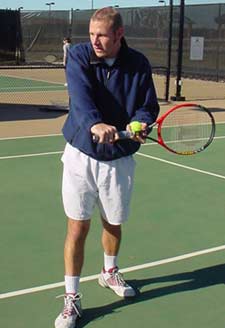
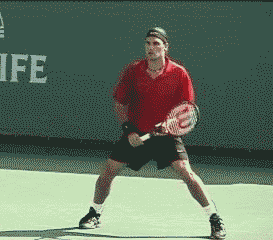
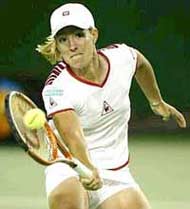
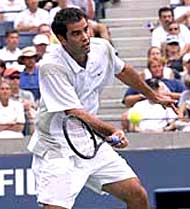
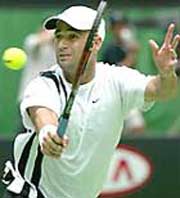
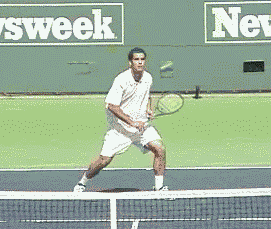
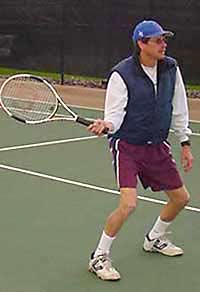
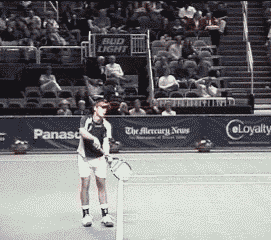
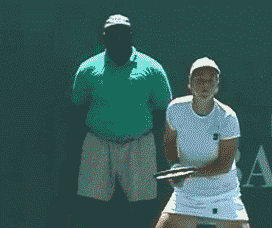
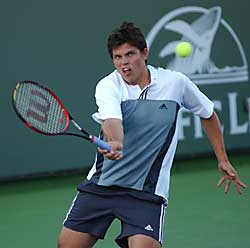

 Your comments are welcome. Let us know what you think about this article by
Your comments are welcome. Let us know what you think about this article by